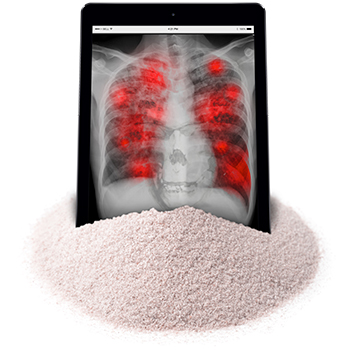
Sand dust created by fracking, the controversial drilling practice that involves hydraulic fracturing, is now one of the country’s greatest threats to the health and safety of workers, according to a report issued by the National Institute for Occupational Safety and Health (NIOSH).
This astounding threat to human health joins the list of other serious hazards linked to fracking such as water contamination, earthquakes and air pollution. As scientists, communities and governments around the world debate just how harmful fracking is to the environment and public health, the practice continues to expand.
To extract gas through fracking, a well is drilled several thousand feet into the ground and then cut horizontally beneath the shale. Water is then injected into the well at extremely high pressure to break up the shale deposits and release pockets of stored natural gas. This water is mixed with sand and chemicals. Up to 4 million pounds of sand is used per well, and the chemicals include toxic, radioactive, and carcinogenic substances. After the well is fracked, approximately 10 to 40 percent of the chemical water (fracking fluid) returns to the surface and must be disposed of.
The NIOSH landmark study found that fracking workers are exposed to silica, particles found in sand dust, at sometimes more than 10 times the recommended limit. These particles can easily be inhaled and then lodge in the lungs and cause potentially fatal silicosis. The link between exposure to silica dust, silicosis, and lung cancer is one of the oldest and most well-known occupational hazards.
Occupations in the oil and gas industry were already amongst the most hazardous in the United States.
Now that we are aware of this new threat to worker safety, OSHA and other government agencies must act quickly to protect workers’ health. For instance, simple procedures such as requiring trucks carrying silica to be covered and providing high quality respirators to workers might go a long ways toward preventing unnecessary cases of lung cancer.
Furthermore, this news highlights a number of lingering questions that must be answered. For instance, how far is this silica drifting, and to what extent are residents living near fracking sites being exposed to this dust and so put at risk of lung cancer? While the fracking boom began over five years ago, we continue to learn of new and astonishing risks that the industry poses to human health and the environment. The country must institute a powerful process to investigate the full effects of this industry, so that it can be regulated properly, and so that individuals and communities are fully informed when deciding whether to allow fracking near their homes.
